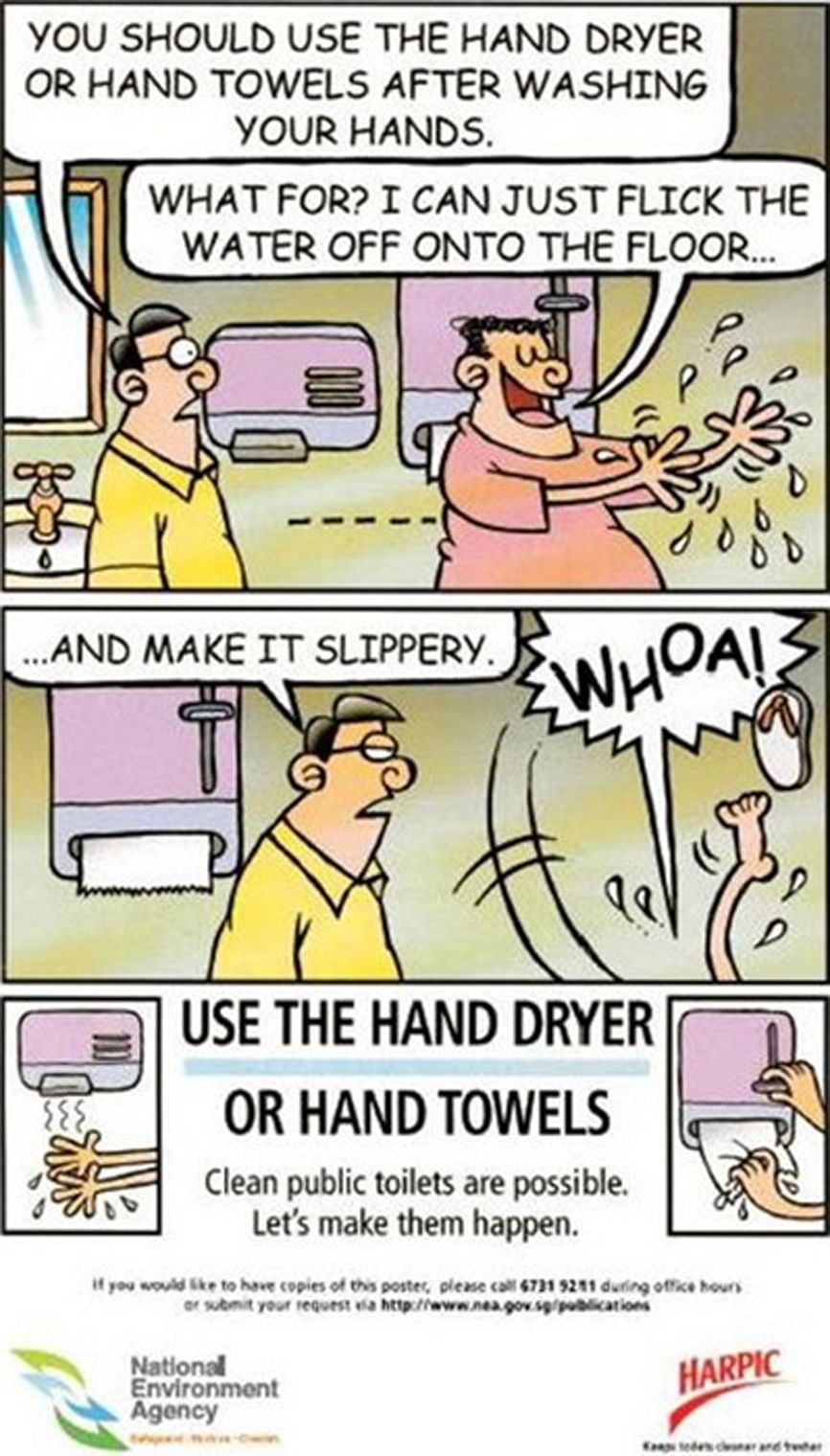US linguists so tickled by Singapore's toilet etiquette posters, they wrote a paper on such campaigns
When American linguists Keri and Kelsi Matwick, who are twin sisters, came to Singapore in 2018, one thing that caught their eye was toilet etiquette posters featuring the use of comics.
Dr Keri Matwick, a lecturer at the Nanyang Technological University (NTU) School of Humanities, says they found these posters "humorous but complex" as they were not common in other countries.
"We started noticing these posters and thinking, 'Oh, this is really interesting,'" she adds.
They were so intrigued that they decided to analyse the use of humour in these posters, which come under the Keep Public Toilets Clean campaign.
Their research led to a paper titled "Comics and humour as a mode of government communication on public hygiene posters in Singapore", which was published in the Discourse, Context & Media journal in April this year.
The study notes that "the choice of the comic genre as the medium of the message allows for a made-up world", helping to make taboo topics more relatable and memorable to the public.
In addition, the comics' "humour and visual-verbal interplay, simple narrative plot and exaggerated characters make it possible to remind, instruct and chide without sounding overbearing".
Dr Kelsi Matwick, an adjunct lecturer at the College of Journalism and Communications at the University of Florida: "Research has shown that humour can improve learning, attention span and retention of a message. The brevity of comics' messages can grab viewers' attention and increase the retention of its message."
Most people in Singapore would have seen these posters, which are found in public toilets in places such as libraries, train stations and hawker centres, and feature comics drawn by cartoonist Lee Chee Chew of The Straits Times.
One example is the "Use The Hand Dryer Or Hand Towels" poster, which shows a bespectacled man watching a fellow toilet user flick water onto the floor after washing his hands, eventually causing himself to slip and fall.
On this comic strip, Dr Keri Matwick says: "Both the language and semiotics of the comic work together to make it funny and instructional."
Adds Dr Kelsi Matwick: "The lesson of the comic is explicit, with the line saying, for example, 'Clean public toilets are possible.'
"By linking the image of the hand flick to this comic, connections to discourse of social irresponsibility and disgrace are made. The underlying message is that following social rules in public washrooms is an intelligent way to act."

While their paper focuses on the Keep Public Toilets Clean posters, the sisters also picked up on the similarities - like the use of humour - in other local public awareness campaigns.
These include the "Get Your Shot, Steady Pom Pi Pi" campaign video from May last year, to encourage members of the public to get their Covid-19 vaccination shots. The video features local star Gurmit Singh as Phua Chu Kang, from the classic local sitcom, holding up two fingers to allude to "V is for victory over Covid".
Get The New Paper on your phone with the free TNP app. Download from the Apple App Store or Google Play Store now


